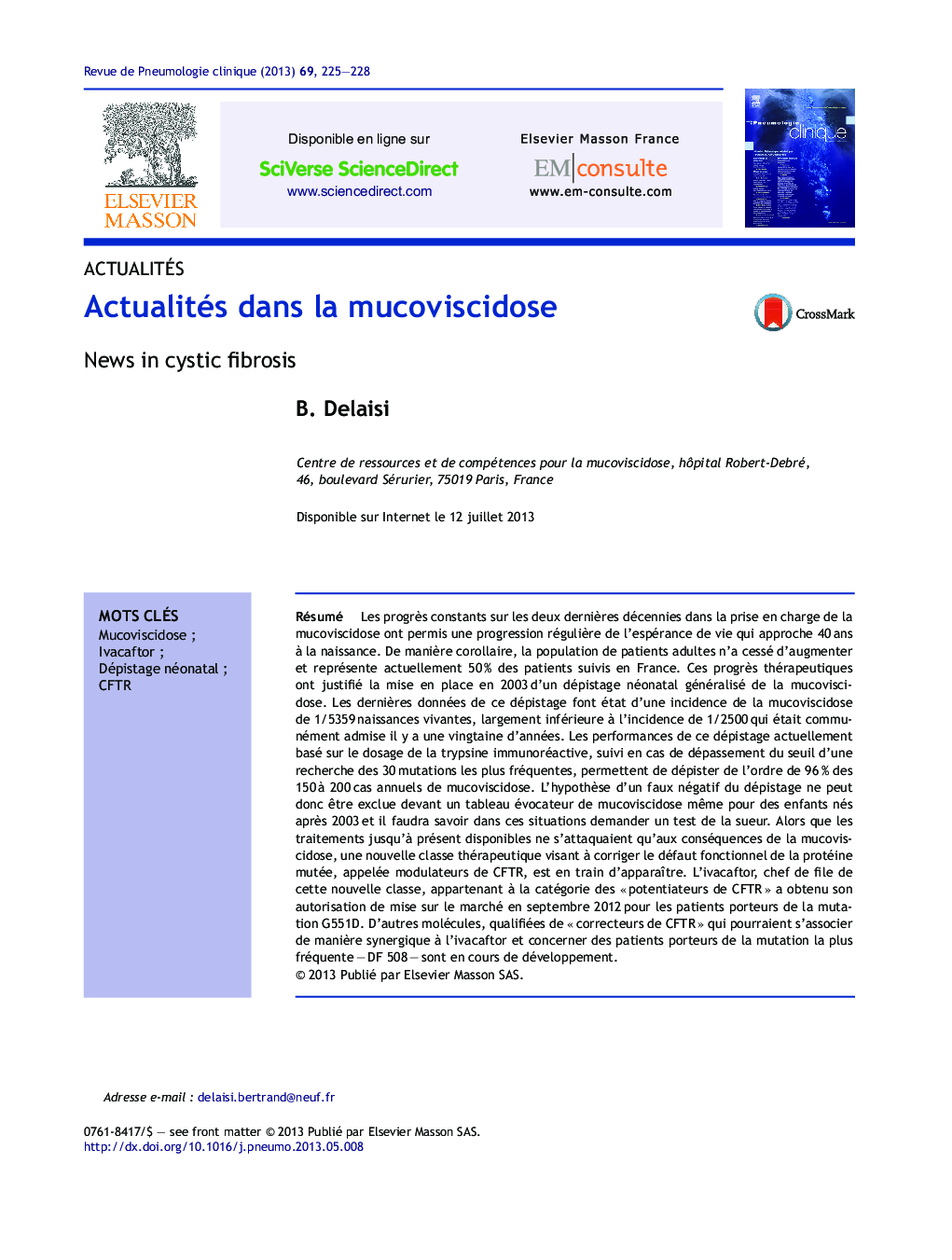| Article ID | Journal | Published Year | Pages | File Type |
|---|---|---|---|---|
| 3419719 | Revue de Pneumologie Clinique | 2013 | 4 Pages |
Abstract
The improvement over the last two decades in the treatment of cystic fibrosis led to an increase in life expectancy approaching 40 years at birth. Logically, the population of adult patients has been increasing and is currently 50% of patients followed in France. These therapeutic advances have justified the establishment in 2003 of a generalized neonatal screening for cystic fibrosis. The latest data of this screening show an incidence of CF of 1/5359 live births, far below the incidence of 1/2500 which was widely accepted twenty years ago. The performance of this screening is currently based on the dosage of trypsin immuno reactive, followed in case of exceeding the threshold of a search of the 30 most common mutations, can detect around 96% of 150 to 200 CF cases every year. Therefore, the possibility of a false negative of the screening cannot be excluded and evocative symptoms of cystic fibrosis, even for children born after 2003, will lead to prescribe a sweat test. While treatments available so far goal consequences of cystic fibrosis, a new therapeutic class to correct the functional defect of the mutated protein, called CFTR modulators, is emerging. Ivacaftor, leader of this new class, belonging to the category of “CFTR potentiator” got its access on the market in September 2012 for patients carrying the G551D mutation. New other molecules, named “CFTR correctors” which can have synergistic effect with ivacaftor and concern patients carrying the most common mutation - DF 508 - are under development.
Keywords
Related Topics
Health Sciences
Medicine and Dentistry
Infectious Diseases
Authors
B. Delaisi,
